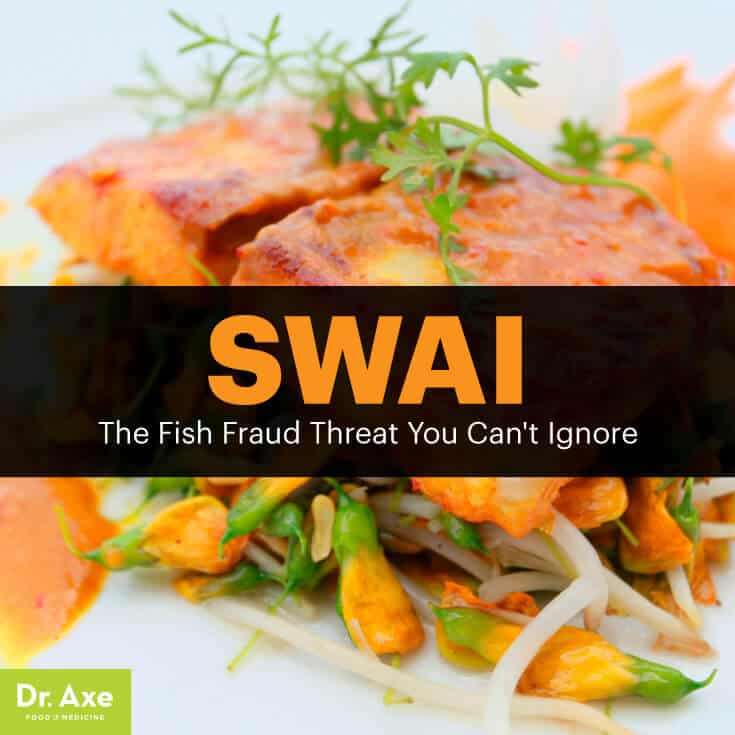
I’m a huge fan of certain types of wild-caught fish. Certain seafood picks land serve as muscle-building protein foods. Some even provide ample doses of healthy fats like omega-3s. But fish often comes with a hefty price tag, which is why consumers are always looking for more affordable options. Consumers are flocking to Swai fish due to its cheap price tag, but there are major problems with this fish that you need to know about.
Swai fish costs only about $2 per pound, but it’s much costlier when you consider what it could be doing to your health.
What is Swai Fish?
Swai fish is a type of white fish with a mild flavor and flaky texture. It’s a freshwater fish that’s native to Vietnamese rivers and a type of catfish. It’s also called Vietnamese catfish, basa fish and iridescent shark, but it’s neither a basa nor a type of shark.
The abundance of names come from an identity crisis swai fish had in the early 2000s, when it still was sold in the U.S. under the name of “catfish.” In 2003, Congress passed a law stating that only American catfish could be labeled as such, prompting a variety of names to flood the market, though today, the Vietnamese fish industry seems to have settled on swai. You won’t find the fish in in Alabama, Louisiana or Mississippi, though. In these states, where catfish is a big industry, it’s illegal to sell swai. (1)
Is Swai Fish Safe to Eat?
Because swai fish isn’t technically considered catfish, it isn’t subject to the same stringent inspection that other imported catfish are. (2)
That’s a problem because antibiotics that are banned in the U.S. are often found in fish products from Vietnam, along with bacteria like E. coli. While swai fish still has to meet inspection requirements, doubts remain among the U.S. catfish industry that issues like polluted water are being addressed in Asia.
In fact, in the summer of 2016, nearly 26,000 pounds of swai fillets that were sold at Aldi’s stores in America were recalled. The fish hadn’t met federal inspection requirements. (3) It’s pretty impressive that the lax handling was caught, however; only about 2 percent of imported seafood is ever tested for antibiotic drug residue. (4)
And one study found that Vietnamese imported fish like swai had the greatest number of health violations of imported seafood in the U.S. (5)
But the biggest issue with swai fish is the fact that it’s factory farmed. Just like factory farmed meats, when fish are mass produced out of the wild, there are repercussions.
For starters, factory-farmed fish are distressed. They don’t enjoy being in small, tight spaces — yes, even your goldfish hates it. When these fish become distressed, like humans, they’re more prone to disease. And how are factory-farmed fish treated for disease? If you guessed antibiotics, you’re right. As we know, you are what you eat eats.

Factory-farmed fish advocates maintain that’s raising fish on farms instead of capturing strained populations in the wild is better for everyone. But factory fish like swai have to eat — and their diets consist mainly of fishmeal made from small, wild fish, GMO corn and grains. Not so tasty. While massive amounts of small fish are being drawn out of the water to feed the farmed fish, wild populations have less to eat, perpetuating an ugly, fishy cycle. (6)
While there aren’t many studies on farm-fished swai per se, when it comes to tilapia and salmon, it’s clear that farmed fish is not the best option. I believe swai fish falls in the same category.
What Fish Do I Recommend?
Swai isn’t the only fish I don’t recommend — in fact, there are 17 fish you should never eat. So what options does that leave pescatarian lovers with? A ton.
Wild-caught Alaskan salmon is a favorite of mine. It’s packed with vitamins B12 and D, which many Americans are deficient in. Salmon is also a serious brain food. With so much omega-3 fatty acids, it’ll keep away brain fog and improve memory.
Sardines caught in the Pacific are another healthy choice that’s easy to find and add to dishes — and they’re inexpensive, too. Because they’re quite low in the fish food chain, sardines don’t suffer from sustainability issues the way other fish do. They actually reduce inflammation and protect bone health; not bad for such a little fish.
Of course, you can get the omega-3 benefits of fish without eating them by choosing a high-quality phytoplankton supplement. The ample levels of omega-3s EPA and DHA found in some fish actually come from the fish eating phytoplankton.
Final Thoughts on Swai Fish
It’s because I love fish so much that I can’t recommend swai fish. Though studies on swai fish are limited, especially compared to more popular fish like tilapia and salmon, the information we do know is enough to keep me away from it. The possibility of swai fish being sold with antibiotic residues and lower standards is just one part of it. The fact that swai sold in the U.S. from almost exclusively from factory farms means that it’s inferior in too many ways.
When you are choosing a fish, I suggest sticking to fish low in contaminants and high in omega-3 fatty acids, like wild-caught salmon and Pacific sardines. And please, skip factory-farmed fish.